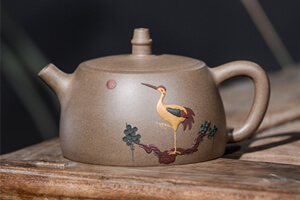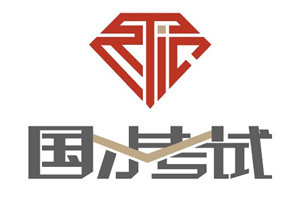Why Matsutake Mushrooms Are So Expensive
Narrator: Every year, Gihei Fujiwara goes into the mountains hunting for this: a matsutake mushroom. If the harvest is low, wholesale matsutake can cost over $500 per kilogram. And over the past 70 years, Japan’s harvest has declined by over 95%. Now the mushroom’s future is unclear. So, what makes these mushrooms so expensive? And why have they almost disappeared?
Matsutake can’t exist without trees. They grow connected to the roots of red pine trees in a symbiotic relationship. Matsutake grow in several countries, including China and South Korea. But Japan’s fetch the highest price. In 2021, the season’s first matsutake were auctioned off for over $7,000. They’re harvested once a year, from around September to November. But because the domestic harvest in Japan has plummeted, the price is volatile. Unlike other prized foods, it’s not a problem of overharvesting; it’s a problem of changing habitat.
Matsutake can’t be grown on farms; they have to be foraged by hand. But foraging is no easy task. Gihei Fujiwara has been foraging matsutake for over 60 years. There’s a lot of anticipation leading up to each harvest season.
Gihei Fujiwara: The income really fluctuates a lot. In drought years, like last year, I was only able to harvest where I watered. The year before last year, the fall temperatures were too high. It was no good for matsutake mushrooms. It is a bumpy ride.
Narrator: Gihei forages from dawn till dusk, returning home around midday to empty out his baskets. Even for someone with his experience, it can be hard to predict the quality of a harvest.
Gihei Fujiwara: As for this year, everybody says it will be a good harvest. But the quality is not that good. Due to the high temperature, there has been more damage by insects than usual.
Narrator: Even with a good harvest, these mushrooms are difficult to find. They blend in with the forest floor and often don’t grow at the base of a tree. Knowing where to look is a result of decades of foraging on this mountain.
Gihei Fujiwara: It is impossible to tell which trees are carrying the fungus just by looking at them from the outside. The best place for matsutake mushrooms to grow is where humans can rest comfortably; where the wind is good and the sun shines through the trees. It is nice to be able to go into the mountains, do what I want, and feed my family. I think I can keep this job for a little longer.
Narrator: It’s exhausting work, but today, Gihei is rewarded, filling several baskets each trip. But his work isn’t over when the harvest ends. In the off season, Gihei goes back to the mountain and tries to cultivate matsutake.
Gihei Fujiwara: I work on what I felt while walking in the mountains during the harvest season. For example, if I feel that it needs a little more sunlight, I cut the branches. And I remove any accumulation of fallen leaves.
Narrator: Gihei also tries to spread the spores of matsutake to help them grow. But cultivating matsutake this way takes around five years, and success isn’t guaranteed. Even though this year was a big harvest, the long-term trend is in decline. In 1953, Japan harvested around 6,400 metric tons of matsutake. But in 2019, it harvested only 14 metric tons. One of the biggest reasons for this decline is a change in how forests are maintained.
Gihei Fujiwara: There is no one left to go into the mountains to maintain the environment. This is because we no longer use firewood. In the past, people lived on firewood. They took very good care of the mountain. Now, firewood is no longer necessary. By collecting fallen leaves and other materials from the mountain in this way, the mountain naturally got thin. And that’s how the number of matsutake mushrooms increased in the past.
Narrator: Matsutake also grows best with red pine trees that are a few decades old. But over the past century, an invasive pest called pinewood nematode has been hurting the growth of red pine trees throughout Japan. Without the trees, matsutake won’t be able to survive. The mushrooms also need ample rainfall and cool temperatures early in the season. All of these factors create a delicate balance for matsutake.
Harvests vary widely each year, which causes big changes in price. In 2018, prices were 20% to 50% lower than the year before because of a good harvest. But in 2019, when there was a period of dry weather, prices almost doubled, reaching over $800 per kilogram in some parts of Japan.
Gihei Fujiwara: When there is a bad harvest, the prices can be unimaginable. For the past 10 years or so, the price has been going up compared to the past.
Narrator: Today, Japan imports over 90% of its matsutake from places like China and South Korea. In 2019, only around 14 of the 1,000 metric tons consumed were harvested domestically. Imported matsutake are more affordable compared to the ones grown in Japan. But some people consider these mushrooms to be less fresh and not as flavorful.
Matsutake with a closed cap are often considered to be the most valuable. But different sizes are used in different types of dishes.
Shigeko Takematsu: For sukiyaki, I use a large piece like this one. For grilling, I use about 15 centimeters of this size. These are for sushi. This size is for soup.
Narrator: A full-course meal at this inn costs around $130.
Customer: It’s not something you can eat a lot or that often. Once a year, we splurge and eat matsutake mushroom dishes during the season, which creates good memories for our family.
Shigeko Takematsu: For Japanese people, matsutake mushrooms are an extravagance in autumn, but it is something that they would like to eat at least once a year.
Narrator: Due to the declining harvests, matsutake mushrooms were listed as “vulnerable” in 2020. But the species isn’t gone yet.
Gihei Fujiwara: It is important to take care of the pines and take good care of the mountains. We have to create an environment that matsutake mushrooms like – not too much sun, but enough to let the sun shine through the trees.
Narrator: But if its growth and environment aren’t sustained, this legendary mushroom likely won’t get cheaper anytime soon.















